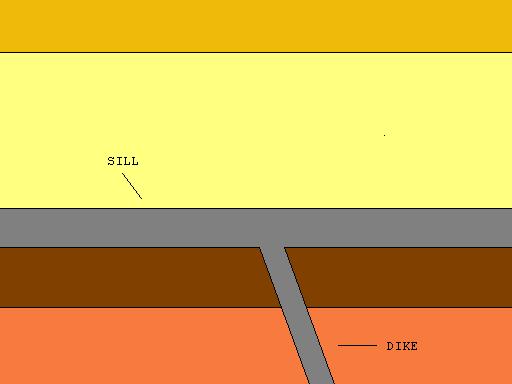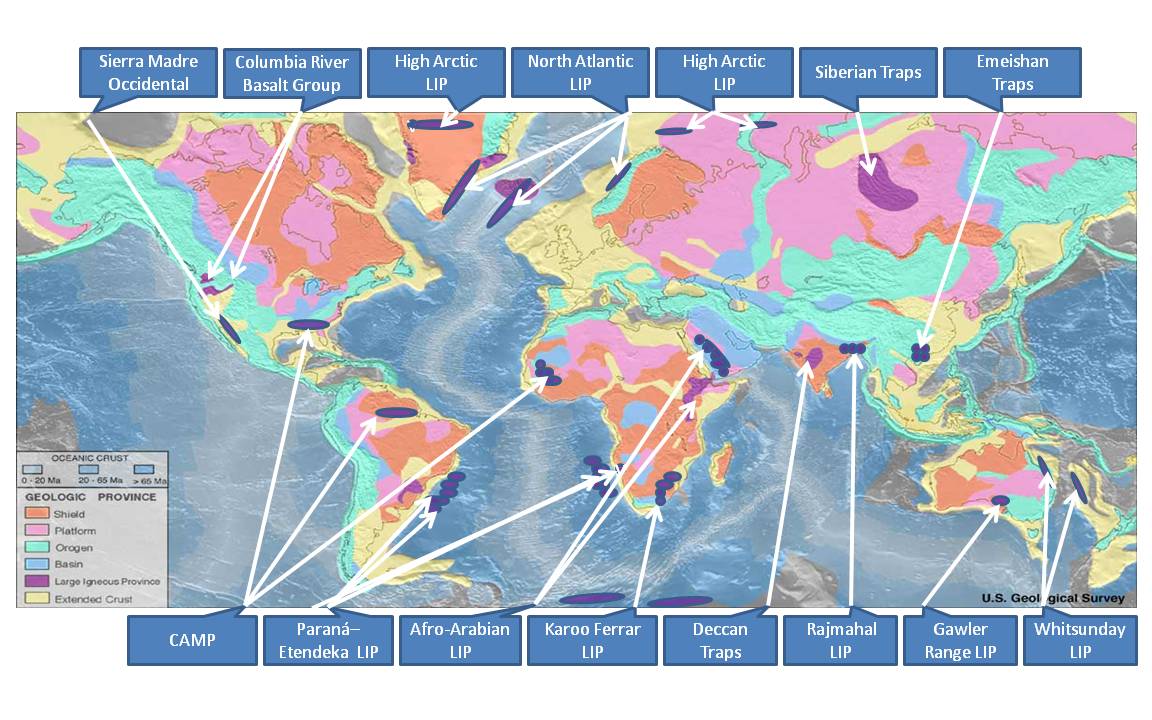|
Musgrave Block
The Musgrave Block (also known as the Musgrave Province) is an east-west trending belt of Proterozoic granulite-gneiss basement rocks approximately long. The Musgrave Block extends from western South Australia into Western Australia. The Musgrave Block is primarily exposed through the actions of the Petermann Orogeny at c. 535-550 Ma, which exhumed the orogenic belt along the Woodroffe Thrust. Geomorphology of Quaternary deposits The Musgrave Block is currently passive geologically, with surficial processes described as residual erosion. The area currently experiences on average less than 150mm (6 inches) of rainfall per annum, which provides little surface runoff and hence virtually no erosion. The landforms of the area are primarily composed of wide calcrete plains, often covered by Pleistocene Age aeolian deposits of sand dunes, sometimes reworked into ephemeral sheetwash fans. Outcrop is rare, restricted primarily to the igneous rocks of the Giles Complex and several gr ... [...More Info...] [...Related Items...] OR: [Wikipedia] [Google] [Baidu] |
Amadeus Basin
The Amadeus Basin is a large (~170,000 km2) intracratonic sedimentary basin in central Australia, lying mostly within the southern Northern Territory, but extending into the state of Western Australia. Origins The Amadeus Basin is named after Lake Amadeus which lies within the basin. Local deposition of up to 14 km of marine and non-marine sedimentary rocks took place from the Neoproterozoic to the late Paleozoic. Along with other nearby sedimentary basins of similar age (Officer Basin, Georgina Basin, Ngalia Basin), the Amadeus Basin is believed to have once been part of the hypothetical Centralian Superbasin. The basin was locally deformed during the Petermann Orogeny (late Neoproterozoic — Cambrian), and more extensively during the Paleozoic Alice Springs Orogeny, events that fragmented the former Centralian Superbasin. The basin has been above water for the past 50 million years, as the modern coast of South Australia and Western Australia formed during this ... [...More Info...] [...Related Items...] OR: [Wikipedia] [Google] [Baidu] |
Rhyolite
Rhyolite ( ) is the most silica-rich of volcanic rocks. It is generally glassy or fine-grained (aphanitic) in texture, but may be porphyritic, containing larger mineral crystals (phenocrysts) in an otherwise fine-grained groundmass. The mineral assemblage is predominantly quartz, sanidine, and plagioclase. It is the extrusive equivalent to granite. Rhyolitic magma is extremely viscous, due to its high silica content. This favors explosive eruptions over effusive eruptions, so this type of magma is more often erupted as pyroclastic rock than as lava flows. Rhyolitic ash-flow tuffs are among the most voluminous of continental igneous rock formations. Rhyolitic tuff has been extensively used for construction. Obsidian, which is rhyolitic volcanic glass, has been used for tools from prehistoric times to the present day because it can be shaped to an extremely sharp edge. Rhyolitic pumice finds use as an abrasive, in concrete, and as a soil amendment. Description Rhyolite i ... [...More Info...] [...Related Items...] OR: [Wikipedia] [Google] [Baidu] |
Bimodal Volcanism
Bimodal volcanism is the eruption of both mafic and felsic lavas from a single volcanic centre with little or no lavas of intermediate composition. This type of volcanism is normally associated with areas of extensional tectonics, particularly rifts. Occurrence Most occurrences of bimodal volcanism are associated with thinning of the crust and the presence of such rocks in metamorphic sequences has been used to provide evidence for past rifting events. Most examples come from areas of active continental rifting such as the Basin and Range Province. Bimodal volcanism has also been described from areas of transtension, the early phases of back-arc basin formation and in the products of both continental and oceanic hotspots (e.g. Yellowstone, Anahim and the Canary Islands). Mechanism of formation Bimodal volcanism is normally explained as a result of partial melting of the crust, creating granitic magma Magma () is the molten or semi-molten natural material from which all i ... [...More Info...] [...Related Items...] OR: [Wikipedia] [Google] [Baidu] |
Ultramafic To Mafic Layered Intrusions
A layered intrusion is a large sill-like body of igneous rock which exhibits vertical layering or differences in composition and texture. These intrusions can be many kilometres in area covering from around to over and several hundred metres to over in thickness.Blatt, Harvey and Tracy, Robert J. (1996) ''Petrology: Igneous, Sedimentary and Metamorphic,'' 2nd ed., pp. 123–132 & 194–197, Freeman, While most layered intrusions are Archean to Proterozoic in age (for example, the Paleoproterozoic Bushveld complex), they may be any age such as the Cenozoic Skaergaard intrusion of east Greenland or the Rum layered intrusion in Scotland. Although most are ultramafic to mafic in composition, the Ilimaussaq intrusive complex of Greenland is an alkalic intrusion. Layered intrusions are typically found in ancient cratons and are rare but worldwide in distribution. The intrusive complexes exhibit evidence of fractional crystallization and crystal segregation by settling or floating ... [...More Info...] [...Related Items...] OR: [Wikipedia] [Google] [Baidu] |
Sill (geology)
In geology, a sill is a tabular sheet intrusion that has intruded between older layers of sedimentary rock, beds of volcanic lava or tuff, or along the direction of foliation in metamorphic rock. A ''sill'' is a ''concordant intrusive sheet'', meaning that a sill does not cut across preexisting rock beds. Stacking of sills builds a sill complex . and a large magma chamber at high magma flux. In contrast, a dike is a discordant intrusive sheet, which does cut across older rocks. Sills are fed by dikes, except in unusual locations where they form in nearly vertical beds attached directly to a magma source. The rocks must be brittle and fracture to create the planes along which the magma intrudes the parent rock bodies, whether this occurs along preexisting planes between sedimentary or volcanic beds or weakened planes related to foliation in metamorphic rock. These planes or weakened areas allow the intrusion of a thin sheet-like body of magma paralleling the existing bedding pla ... [...More Info...] [...Related Items...] OR: [Wikipedia] [Google] [Baidu] |
Subvolcanic Rock
A subvolcanic rock, also known as a hypabyssal rock, is an intrusive igneous rock that is emplaced at depths less than within the crust, and has intermediate grain size and often porphyritic texture between that of volcanic rocks and plutonic rocks. Subvolcanic rocks include diabase (also known as dolerite) and porphyry. Common examples of subvolcanic rocks are diabase, quartz dolerite, microgranite, and diorite. See also * Cone sheet * Dike (geology) * Igneous intrusion * Sill (geology) In geology, a sill is a tabular sheet intrusion that has intruded between older layers of sedimentary rock, beds of volcanic lava or tuff, or along the direction of foliation in metamorphic rock. A ''sill'' is a ''concordant intrusive sheet'', ... References Igneous petrology Volcanology {{Volcanology-stub he:סלע געשי#סלעים תת-געשיים ... [...More Info...] [...Related Items...] OR: [Wikipedia] [Google] [Baidu] |
Anatexis
Anatexis (via Latin from Greek roots meaning "to melt down") is the partial melting of rocks. Traditionally, anatexis is used specifically to discuss the partial melting of crustal rocks, while the generic term "partial melting" refers to the partial melting of all rocks, in both the crust and mantle. Anatexis can occur in a variety of different settings, from zones of continental collision to mid-ocean ridges. It is believed that anatexis is the process largely responsible for the formation of migmatites. Furthermore, scientists have recently discovered that partial melting plays an increasingly important role in active crustal processes, including the advancement of active deformation and the emplacement of crustal granites. As a result, active feedback between crustal shearing, melting, and granite emplacement has become largely accepted in the place of large scale, unreasonable models involving fractional melting of the mantle into granitic batholiths and plutons. Evidence f ... [...More Info...] [...Related Items...] OR: [Wikipedia] [Google] [Baidu] |
Anorogenic Magmatism
In geology, anorogenic magmatism is the formation, intrusion or eruption of magmas not directly connected with orogeny (mountain building). Anorogenic magmatism occurs, for example, at mid-ocean ridges, hotspots and continental rifts. This contrasts with orogenic magmatism that occurs at convergent plate boundaries where continental collision, subduction Subduction is a geological process in which the oceanic lithosphere is recycled into the Earth's mantle at convergent boundaries. Where the oceanic lithosphere of a tectonic plate converges with the less dense lithosphere of a second plate, the ... and orogeny are common. References Igneous petrology Volcanism {{Geology-stub ... [...More Info...] [...Related Items...] OR: [Wikipedia] [Google] [Baidu] |
Permian
The Permian ( ) is a geologic period and stratigraphic system which spans 47 million years from the end of the Carboniferous Period million years ago (Mya), to the beginning of the Triassic Period 251.9 Mya. It is the last period of the Paleozoic Era; the following Triassic Period belongs to the Mesozoic Era. The concept of the Permian was introduced in 1841 by geologist Sir Roderick Murchison, who named it after the region of Perm in Russia. The Permian witnessed the diversification of the two groups of amniotes, the synapsids and the sauropsids ( reptiles). The world at the time was dominated by the supercontinent Pangaea, which had formed due to the collision of Euramerica and Gondwana during the Carboniferous. Pangaea was surrounded by the superocean Panthalassa. The Carboniferous rainforest collapse left behind vast regions of desert within the continental interior. Amniotes, which could better cope with these drier conditions, rose to dominance in place of their am ... [...More Info...] [...Related Items...] OR: [Wikipedia] [Google] [Baidu] |
Large Igneous Province
A large igneous province (LIP) is an extremely large accumulation of igneous rocks, including intrusive (sills, dikes) and extrusive (lava flows, tephra deposits), arising when magma travels through the crust towards the surface. The formation of LIPs is variously attributed to mantle plumes or to processes associated with divergent plate tectonics. The formation of some of the LIPs in the past 500 million years coincide in time with mass extinctions and rapid climatic changes, which has led to numerous hypotheses about causal relationships. LIPs are fundamentally different from any other currently active volcanoes or volcanic systems. Definition In 1992 researchers first used the term ''large igneous province'' to describe very large accumulations—areas greater than 100,000 square kilometers (approximately the area of Iceland)—of mafic igneous rocks that were erupted or emplaced at depth within an extremely short geological time interval: a few million years or less. Maf ... [...More Info...] [...Related Items...] OR: [Wikipedia] [Google] [Baidu] |
Amphibolite
Amphibolite () is a metamorphic rock that contains amphibole, especially hornblende and actinolite, as well as plagioclase feldspar, but with little or no quartz. It is typically dark-colored and dense, with a weakly foliated or schistose (flaky) structure. The small flakes of black and white in the rock often give it a salt-and-pepper appearance. Amphibolite frequently forms by metamorphism of mafic igneous rocks, such as basalt. However, because metamorphism creates minerals entirely based upon the chemistry of the protolith, certain 'dirty marls' and volcanic sediments may also metamorphose to an amphibolite assemblage. Deposits containing dolomite and siderite also readily yield amphibolite (tremolite-schist, grunerite-schist, and others) especially where there has been a certain amount of contact metamorphism by adjacent granitic masses. Metamorphosed basalt (metabasalt) creates ''ortho-amphibolite'' and other chemically appropriate lithologies create ''para-amphibolite''. ... [...More Info...] [...Related Items...] OR: [Wikipedia] [Google] [Baidu] |






